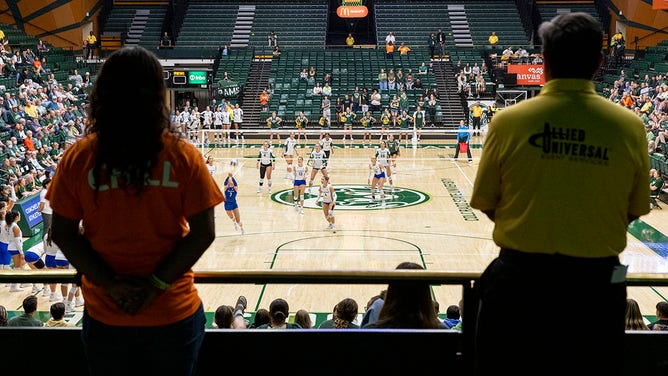Coaches Speaking Out Is The Key To Stopping Male Participation In Women's Volleyball | Rhyen Staley
In the summer of 2021, I told a coaching peer that based on my observation of cultural trends, it was only a matter of time before his women’s volleyball team was competing against males. He laughed at the ridiculousness of the statement. I don’t blame him. Even in 2024, it sounds absurd to most people.
In recent days, the University of Wyoming and Utah State women’s volleyball teams have publicly joined Boise State and Southern Utah in their decision to forfeit their matches with San Jose State in protest. There is a male who identifies as female on the San Jose team and the decision to forfeit is the opposing teams’ way of saying "enough."
As pushback against males in female sports grows nationally, getting coaches to be part of the pushback is crucial. One of the keys in doing this will be the incentive structure at the elite echelon of women’s volleyball.
Easier said than done.

Workers monitor the NCAA Mountain West women's volleyball game between the Colorado State University Rams and San Jose State University Spartans at Moby Arena in Fort Collins, Colo., on Thursday, Oct. 03, 2024. (Photo by Santiago Mejia/San Francisco Chronicle via Getty Images)
While the women volleyball players of those four institutions should absolutely be lauded for leading the charge to protect women’s volleyball from male participation, righting this ship requires the involvement and support of the major conferences and their coaches.
Sadly, not enough volleyball coaches are willing to take a stand publicly and this is especially true of the coaches who lead high-profile programs where their voices carry weight. Unless it negatively impacts their own team’s performance and/or recruiting— and consequently their own job— coaches will continue to ignore the issue. Given the current cultural and political environment, most coaches have decided that the risks of standing against gender ideology outweigh the rewards of standing up for female athletes. They don’t want to bring negative attention to their schools and they fear it could jeopardize their careers.
However, most volleyball coaches I know personally are good people who love what they do and care about their athletes. They know there are differences between males and females and they say so in private conversations.
For example, in college, when men's players would get asked to scrimmage with the women’s team, we were always reminded to tone it down. In 2006, I had a discussion with the coach I was working under (now currently at a Big Ten school) about training females versus males. We talked about how a female’s movement to the ball is different than that of a male because of differences in spatial awareness and proneness to concussions.
Every collegiate volleyball coach knows that biological differences exist between the sexes and that males have a significant advantage in athletics. The challenge is to get them to acknowledge that males are, in fact, starting to move into women’s volleyball and recognize that they have public support in opposing it.
As more female athletes and teams take a public stand, they will need to be supported and even incentivized to continue to do so. This will send a clear message to coaches that they too have permission to engage.
Once parents of top athletes start to make it known en masse that they are not going to send their daughters to institutions that support or tolerate males on teams or in female-only spaces, coaches will find their voice and speak up. Getting great athletes and volleyball players helps coaches win, and winning helps them keep their job or advance their career. If enough parents create a disruption to that process, there is hope.
Until there is an incentive structure change for college coaches, the fight to keep males out of female sports will lie mainly with the athletes, their parents, and advocates.